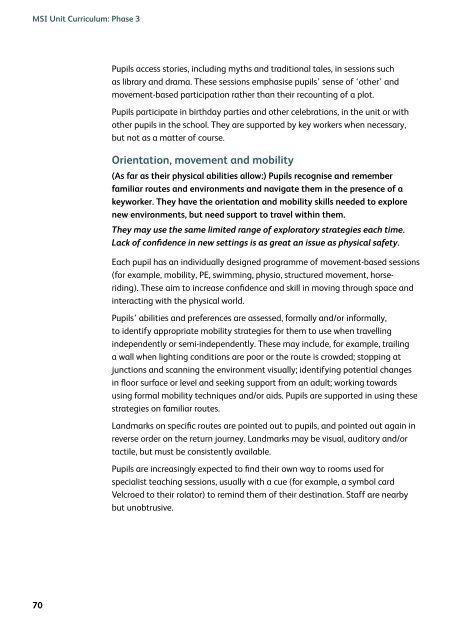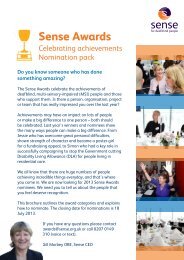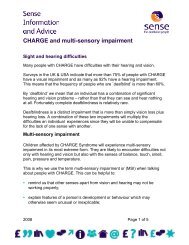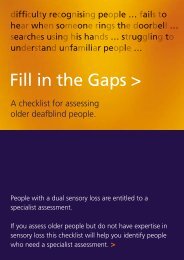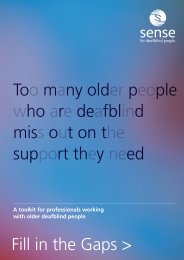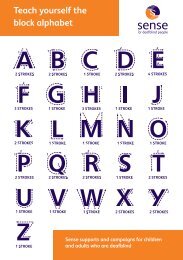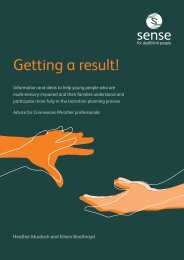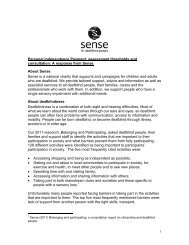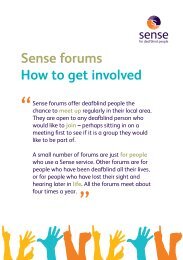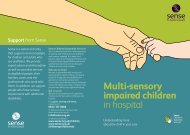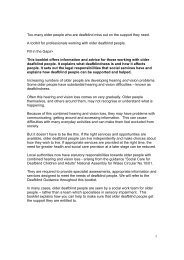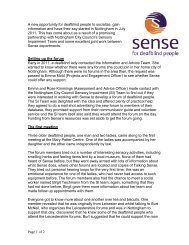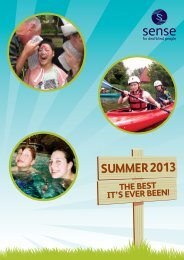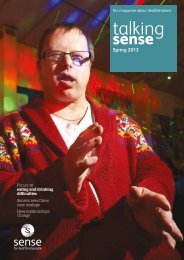MSI Unit Curriculum - Sense
MSI Unit Curriculum - Sense
MSI Unit Curriculum - Sense
You also want an ePaper? Increase the reach of your titles
YUMPU automatically turns print PDFs into web optimized ePapers that Google loves.
<strong>MSI</strong> <strong>Unit</strong> <strong>Curriculum</strong>: Phase 3Pupils access stories, including myths and traditional tales, in sessions suchas library and drama. These sessions emphasise pupils’ sense of ‘other’ andmovement-based participation rather than their recounting of a plot.Pupils participate in birthday parties and other celebrations, in the unit or withother pupils in the school. They are supported by key workers when necessary,but not as a matter of course.Orientation, movement and mobility(As far as their physical abilities allow:) Pupils recognise and rememberfamiliar routes and environments and navigate them in the presence of akeyworker. They have the orientation and mobility skills needed to explorenew environments, but need support to travel within them.They may use the same limited range of exploratory strategies each time.Lack of confidence in new settings is as great an issue as physical safety.Each pupil has an individually designed programme of movement-based sessions(for example, mobility, PE, swimming, physio, structured movement, horseriding).These aim to increase confidence and skill in moving through space andinteracting with the physical world.Pupils’ abilities and preferences are assessed, formally and/or informally,to identify appropriate mobility strategies for them to use when travellingindependently or semi-independently. These may include, for example, trailinga wall when lighting conditions are poor or the route is crowded; stopping atjunctions and scanning the environment visually; identifying potential changesin floor surface or level and seeking support from an adult; working towardsusing formal mobility techniques and/or aids. Pupils are supported in using thesestrategies on familiar routes.Landmarks on specific routes are pointed out to pupils, and pointed out again inreverse order on the return journey. Landmarks may be visual, auditory and/ortactile, but must be consistently available.Pupils are increasingly expected to find their own way to rooms used forspecialist teaching sessions, usually with a cue (for example, a symbol cardVelcroed to their rolator) to remind them of their destination. Staff are nearbybut unobtrusive.70


